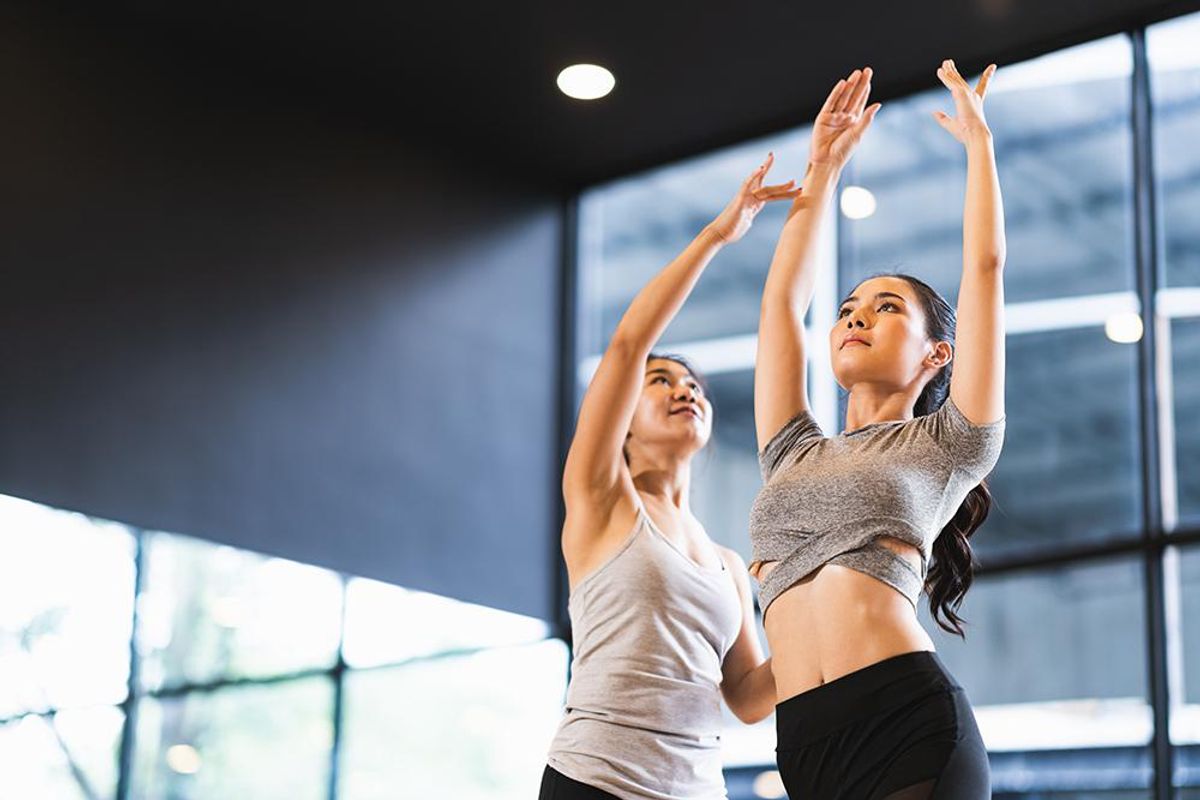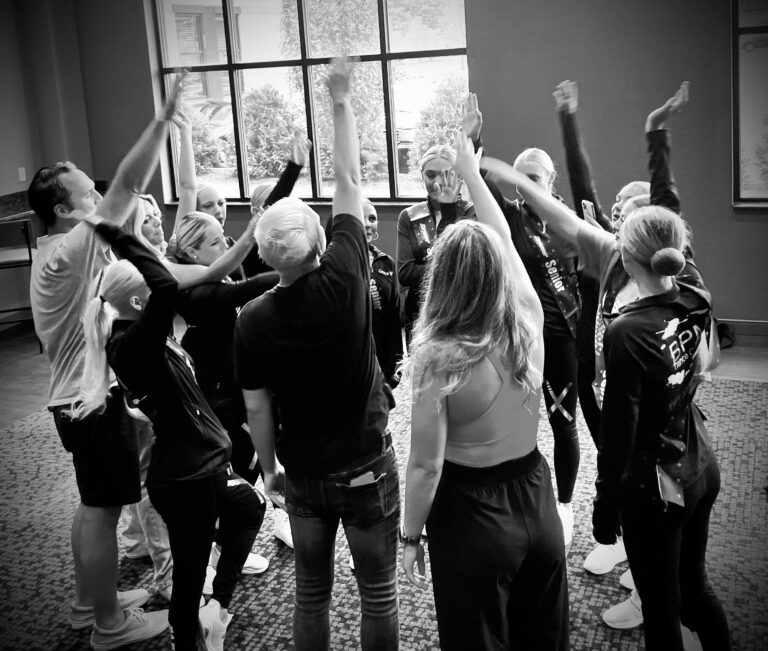
Touch has been a hallmark of dance teaching for as long as most of us can remember. But even before COVID-19, many in the dance community were reconsidering their use of touch, both because of its questionable effectiveness and the historical lack of consent around it.
This year, many dance educators have been successfully teaching without touch for months on end, finding creative new ways to give corrections they’d normally make hands-on. So now that we’ve learned to teach without touch, is it time to abandon it altogether?
Dance Teacher spoke to Donna Krasnow, PhD, a dancer/choreographer, dance teacher, researcher, and co-author of the book Motor Learning and Control for Dance, about whether we need touch in dance training—and how to use it more effectively.
Do we really need touch?
Do dancers learn better through touch? The answer, it turns out, depends on the dancer.
There are three basic methods of learning movement, says Krasnow—visual, analytical and kinesthetic. Visual learners take in what they see, analytical what is explained to them, and kinesthetic what they feel in their bodies. “It turns out that most dancers are visual learners,” she says, whether that’s because they’ve essentially been trained to learn visually or because visual learners are just more inclined to dance. (Or, because our culture has become increasingly reliant on information that we absorb visually.)
Based on this information, it will generally be more effective to show a dancer a correction (by demonstrating yourself or with another dancer) than to manipulate their body into the correct position.
However, that still leaves a small percentage of students in your class who are kinesthetic learners, says Krasnow. “Those dancers will be highly disadvantaged if we take away all touch from teaching.”
Instead of relying on hands-on corrections or any one teaching style, teachers should work to evaluate the learning style of each student. Krasnow suggests experimenting with different ways of relaying information—showing, explaining, using touch—and noticing what resonates with individual students.
Best practices for using touch
When we do use touch in the studio, it’s imperative that we use it the right way. Whether or not touch is effective depends entirely on how it is done, says Krasnow.
“What is not very effective as a learning strategy is to physically manipulate the dancer’s body,” she says. If a dancer is slouching their shoulders, for example, a teacher might approach them and put their hands on their shoulders and pull them back. She explains that while we talk a lot about “muscle memory” in dance, learning fundamentally happens in the brain. “When you manipulate someone into a position, their brain is certainly processing that information,” she says, “but it is not making decisions about how to direct that information. It is only experiencing a new sensory position.” The dancer is learning what that new position feels like, but they are not learning how to get there independently.
What Krasnow calls “light touch” will help the brain learn how to get into this new position better than physically manipulating the dancer’s body to get there. Using the example of slouched shoulders, rather than pulling their shoulders back, a teacher might walk up to the dancer and fan their fingers outwards lightly under the collar bone area. “When you do something with light touch, you give a suggestion to the body and the brain takes in that information and begins to process,” she says. “The brain then has the opportunity to try to experiment with different possibilities.” This allows the brain to learn which neural pathways and muscles to use, which means the dancer will be better able to find that position again on their own.
Touch should also always be used with consent. At the onset of a new class, Krasnow explains the three basic learning styles and tells students that she uses touch as one of her modalities of teaching. She then tells the class that any student who does not want to be touched should come and tell her privately. You can also establish a signal with the class, such as placing a legwarmer next to the barre, that indicates that a student does not wish to be touched that day. And it never hurts to simply ask, “May I touch you?” before correcting a student with your hands.
While touch remains an important teaching method, it should not be the first tool we reach for. Reevaluating touch in the classroom can both encourage the bodily autonomy of your students, and allow them to better retain information.




